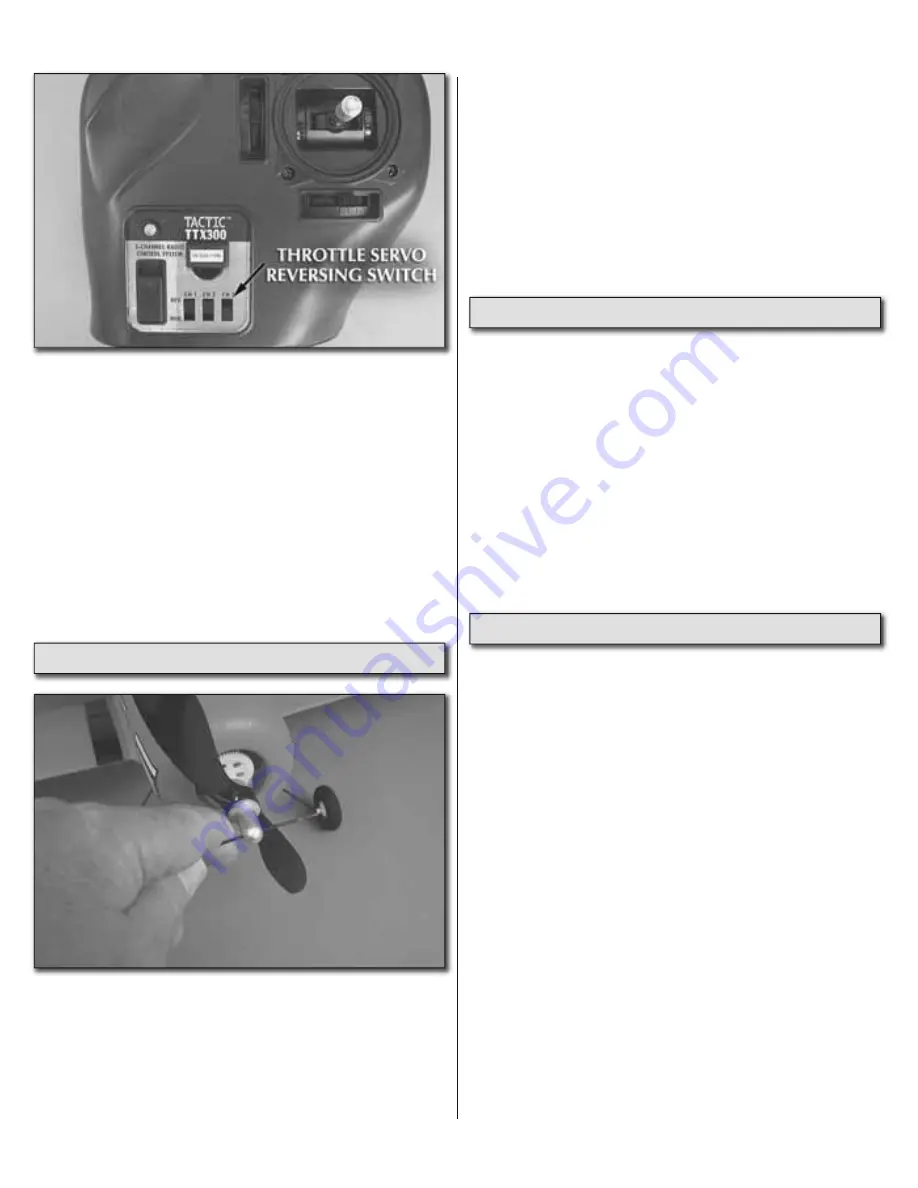
12
❏
C. If stick movement results in control surface
movements or thottle operation is opposite as it
is described above, fl ip the appropriate reversing
switch on the transmitter and recheck the
control directions.
Turn off the airplane and the transmitter.
ARMING THE MOTOR
❏
1. Insert a small wire through the hole in the
propeller nut to be sure the nut is tight. If you do not
have a small wire, carefully tighten it with pliers.
❏
2. The throttle control should be to the far left
position. Turn on the transmitter and the airplane.
Keep your hands free of the propeller and hold
the tail of the airplane securely. Move the throttle
to the far right position and leave it there for
approximately 10 seconds. Then, move it back to
the far left position. The ESC is now armed. When
you move the slider back to the right the motor
will accelerate.
❏
3. When you are certain everything is working
correctly turn off the radio and airplane.
CHOOSE A GOOD FLYING SITE
The Staggerwing should be fl own only when the
wind speed is 5 mph or less.
Find an area clear of
trees, power lines and other structures. A fl ying
fi eld for R/C planes is best. Don’t fl y around groups
of people, especially children or within 6-miles of
existing R/C fl ying fi elds.
Caution:
If you have not
previously fl own a trainer R/C airplane it is strongly
suggested that you learn to fl y with one fi rst. If you
do not do this, seek out an experienced pilot to
help you with the fi rst few fl ights.
PREPARE FOR TAKEOFF
❏
1. Find an open area free of buildings, trees,
power lines and people.
❏
2. For your fi rst few fl ights, fl y only when the
wind is calm. After you are comfortable with the
airplane, you can fl y in winds that are no more
than 5 miles per hour. If fl own in stronger winds,
the plane may be blown down wind and not have
enough power to get back.
❏
3. Make sure the battery pack is fully charged and
that the transmitter has fresh “AA” batteries installed.
❏
4. If others are fl ying in the same area, make sure
that they are not using the same channel radio
system you are. The front of your transmitter has
a tag with a number on the crystal housing. This is
the channel number and frequency you are using.
If someone is on the same channel or frequency,
DO NOT
switch on your transmitter until they are
fi nished fl ying.


































